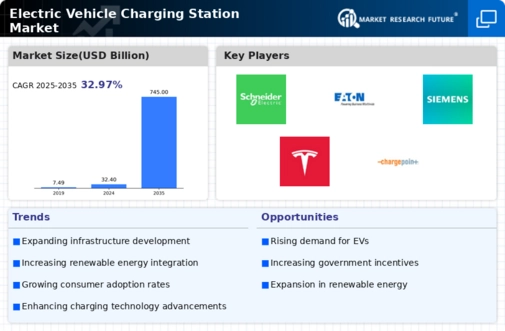Leading market players invested heavily in research and development (R&D) to scale up their manufacturing units and develop technologically advanced solutions, which will help the Electric Vehicle Charging Station market grow worldwide. EV charging station market participants are also undertaking various organic or inorganic strategic approaches to strengthen and expand their worldwide footprint, with major market developments including new product portfolios, contractual deals, mergers and acquisitions, capital expenditure, higher investments, and strategic alliances with other organizations.
Businesses are also coming up with marketing strategies such as digital marketing, social media influencing, and content marketing to increase their scope of profit earnings. The electric vehicle charging station industry must offer cost-effective and sustainable options to survive in a highly fragmented and dynamic EV charging station market climate.
Manufacturing locally to minimize operational expenses and offer aftermarket services to customers is one of the critical business strategies organizations use in the global electric vehicle charging station industry to benefit customers and capture untapped market share and revenue. The EV charging station market has recently offered significant advantages to the automobile industry. Moreover, more industry participants are utilizing and adopting cutting-edge technology has grown substantially.
Major players in the electric vehicle charging station market, which includes Webasto Group, Schneider Electric, ABB, Eaton, Siemens, Tesla, EVgo Services LLC, ChargePoint, Inc., and others, are attempting to expand market share and demand by investing in R&D operations to produce sustainable and affordable solutions.
Shell Corporation produces oil and natural gas. It works in four divisions: Unified Gas, Upstream, Downstream, and Management. The Hague, the Netherlands-based firm, was formed in February 1907. Shell completed the purchase of Schaltbau Holding AG, a leading EV Charging Station market infrastructure developer for charging solutions for businesses that manufacture electric cars, in November 2022. The purchase expands Shell's offering of lower-carbon options for fleet services and industrial transportation clients by adding considerable knowledge of electrical bus charging and an extensive electric vehicle charging pipeline.
Renault SA is a manufacturer of automobiles. It sells passenger automobiles, business vehicles, electric-powered cars, and performance vehicles. Renault, Dacia, Renault Samsung Motors, Alpine, and LADA are the brands it operates under. Louis Renault created the corporation in 1898, based in Boulogne-Billancourt, France. Mobilise and Renault dealerships confirmed the deployment of Mobilise Fast Charge, a rapid charging network, in October 2022. The bulk of the units will be positioned at Renault dealers within 5 minutes of a motorway or motorway exit.


















Leave a Comment